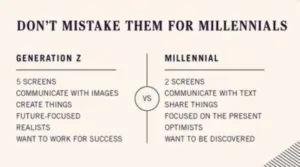The World Has Changed! Economic realities, the concern for our environment, and the digital transformation have reshaped our views of almost everything in life, including our work lives and the flexible workforce.
Since the early 90s, when IBM had its first “layoff,” companies have become more comfortable with matching expenses to revenues by deploying new employment models.
Many Models to Choose From
Outsourcing, temporary employees, consultants, and contractors are all ways to access talent and human resources on an as needed basis. There is a flexible workforce.

There are many benefits to these types of models including financial, aligning resources with current needs from a time/place/expertise perspective, and bringing in fresh and new ideas from outsiders who have exposure in multiple industries facing many different sets of opportunities and challenges.
Human Capital, The Most Valuable Asset – Yours, Mine or Ours
Not only have companies adjusted and learned to reap benefits from the new approach to human capital, but so has the workforce. Once exposed to this new employment environment, many workers have learned to not only adjust to it but wholeheartedly embrace and integrate it into their lifestyle.
Focus on Telecommuters and Free-Lancers
Intuit has said, through its Turbo Tax data, that approximately thirty-four (34%) percent of the US workforce are now telecommuters or free-lancers, and that number continues to expand rapidly. The flexibility of these “engagement models” offer workers (telecommuters or free-lancers) an opportunity to live in places that support their cost of living targets, the cultural amenities they desire, and the recreational activities they most enjoy.
Some of the models even provide for a “work when you want to” approach, allowing workers to pick the times and days they want to work. In addition, some companies provide the flexibility of allowing workers to meet deadlines rather than working specific hours. It is more like paying for a project or a specific measurable result. Workers can find better alignment to fulfill family needs or pursue their recreation activities at the times of day most appropriate or when weather permits.
This helps to create an environment for both workers and companies where the collaboration is much more on a “want to” footing rather than a “have to” one. When both the worker and the company get their desired result, it creates a different management/motivation discussion.
For the worker, they are motivated by appropriate compensation, engaging and interesting work, and the flexibility to more readily participate in the other non-work aspects of life. For the company, having access to the talent and expertise required for a task/project, sizing the expense ahead of time for that work, not having an ongoing “fixed” expense for a resource that may become idle in the future, are all great benefits.

So, this “engagement model” offers an advantage to both the worker and the company. Ultimately, once you have identified the right partner, no matter which side of the equation you are on, the interaction will be more targeted, focused and productive. There is less pressure on both parties.
Longer Term Benefits of the Flexible Workforce
As workers become exposed to many work environments through free-lance arrangements, they become more valuable. They build a knowledge base anchored in different products and services, different design and fulfillment models, and employer-worker “engagement models”.
If businesses learn to tap into this knowledge, they will maximize the value of these worker relationships. The opportunity is capitalized upon when the company learns how to keep these workers engaged on a regular but as needed basis.
Conclusion – The Flexible Workforce
If you are not yet using these types of work “engagement models”, or if you have not yet decided that using these models must become a competency for your company, you may be at a competitive disadvantage for skilled workers. People will choose to work with companies that make them feel comfortable and where they see the prospect of future work opportunities.
Even though there is a benefit in flexibility and excitement in working with different products and companies, it is always comforting to be able to reconnect with a familiar partner. Fostering an environment of comfort, easy re-connections, and flexible “engagement models” will serve you well. These types of approaches will become part of your company’s brand.
With Social Media at their disposal, the talented telecommuters and freelancers will both find you or avoid you based on how you embrace them. Make sure that you’ll have access to talent and expertise when and where you may need it, in the US or globally. These “engagement models”” are here to stay.
This new work model is embraced quite readily by the Millennials (Generation Y). Flexibility, social consciousness, and meaningful work are all important to the Millennials, and that needs to be packaged in your engagement with them. A similar model will work, with some minor adjustments for the upcoming Generation Z.

These new engagement models may be even more prevalent for the Z Generation, but for some other reasons. They (Generation Z) will more likely be self-taught or benefit from highly accelerated (Hacker type training), very focused types of training. They will likely engage in internet based simulations and “labs.”
Generation Z, because of their pragmatism, and the availability of dispersed knowledge in enjoyable ingestible forms such as video will likely be life-long learners. Sixty (60%) of Generation Z wants to be in their own business vs. thirty-nine (39%) for Millennials. They are fiercly independent. Understanding the cultural differences between generations and planning for them creates a wonderful opportunity. Businesses that understand these dynamics will attract ever more capable, contemporarily trained talent in the future.
The challenge will be to adjust the way you assess the capabilities of your targeted talent. As the world moves faster, and alternative methods of self-education are accessible and effective, companies will have to define ways of making their talent assessment decisions in ways very unlike what you may use today. Tapping into the cautious confidence of Generation Z and the lifestyle desires of the Millennials, are opportunities for competitive advantage and superior profitability.

